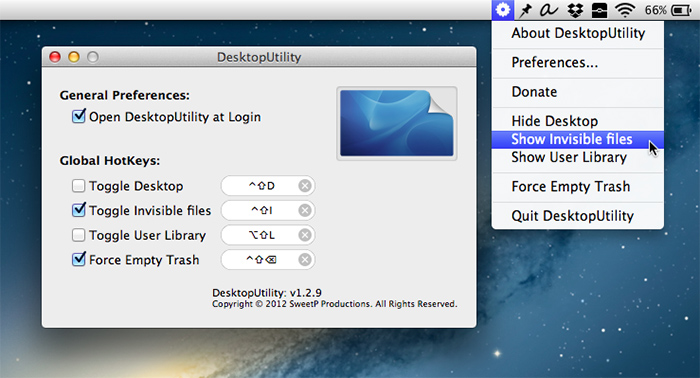- File Utilities Mac
- Norton Utilities For Mac
- File Utilities For Mac Windows 10
- File Utilities For Mac Shortcut
- File Search Utility For Mac
Your Mac's Utilities Folder contains a lot of helpful extra tools like the Bootcamp Assistant, Monitor Activity, Disk Utility, Terminal, and a lot more. You can find your way in the Utilities Folder through clicking the Applications. After that, click the Utilities Folder. Simply go to your Mac Finder from your Mac's Dock Go to the applications located in the left pane. After that, select 'Utilities'. Oct 23, 2019 Pacifist is a shareware application that opens Mac OS X.pkg package files,.dmg disk images, and.tar,.tgz, and.tar.gz file archives and allows you to extract individual files and folders out of them.
File system formats available in Disk Utility on Mac Apple File System (APFS). Apple File System (APFS), the default file system for Mac computers using macOS 10.13. Mac OS Extended. Choose one of the following Mac OS Extended file system formats for compatibility with Mac computers.
Disk Utility User Guide
Disk Utility on Mac supports several file system formats:
Apple File System (APFS): The file system used by macOS 10.13 or later.
Mac OS Extended: The file system used by macOS 10.12 or earlier.
MS-DOS (FAT) and ExFAT: File systems that are compatible with Windows.
Apple File System (APFS)
File Utilities Mac
Apple File System (APFS), the default file system for Mac computers using macOS 10.13 or later, features strong encryption, space sharing, snapshots, fast directory sizing, and improved file system fundamentals. While APFS is optimized for the Flash/SSD storage used in recent Mac computers, it can also be used with older systems with traditional hard disk drives (HDD) and external, direct-attached storage. macOS 10.13 or later supports APFS for both bootable and data volumes.
APFS allocates disk space within a container on demand. The disk's free space is shared and can be allocated to any of the individual volumes in the container as needed. If desired, you can specify reserve and quota sizes for each volume. Each volume uses only part of the overall container, so the available space is the total size of the container, minus the size of all the volumes in the container.
Choose one of the following APFS formats for Mac computers using macOS 10.13 or later.
APFS: Uses the APFS format.
APFS (Encrypted): Uses the APFS format and encrypts the volume.
APFS (Case-sensitive): Uses the APFS format and is case-sensitive to file and folder names. For example, folders named 'Homework' and 'HOMEWORK' are two different folders.
APFS (Case-sensitive, Encrypted): Uses the APFS format, is case-sensitive to file and folder names, and encrypts the volume. For example, folders named 'Homework' and 'HOMEWORK' are two different folders.

You can easily add or delete volumes in APFS containers. Programming application for mac. Each volume within an APFS container can have its own APFS format—APFS, APFS (Encrypted), APFS (Case-sensitive), or APFS (Case-sensitive, Encrypted).
Mac OS Extended
Norton Utilities For Mac
Choose one of the following Mac OS Extended file system formats for compatibility with Mac computers using macOS 10.12 or earlier.
Mac OS Extended (Journaled): Uses the Mac format (Journaled HFS Plus) to protect the integrity of the hierarchical file system.
Mac OS Extended (Journaled, Encrypted): Uses the Mac format, requires a password, and encrypts the partition.
Mac OS Extended (Case-sensitive, Journaled): Uses the Mac format and is case-sensitive to folder names. For example, folders named 'Homework' and 'HOMEWORK' are two different folders.
Mac OS Extended (Case-sensitive, Journaled, Encrypted): Uses the Mac format, is case-sensitive to folder names, requires a password, and encrypts the partition.
File Utilities For Mac Windows 10

Windows-compatible formats
Choose one of the following Windows-compatible file system formats if you are formatting a disk to use with Windows.
File Utilities For Mac Shortcut

You can easily add or delete volumes in APFS containers. Programming application for mac. Each volume within an APFS container can have its own APFS format—APFS, APFS (Encrypted), APFS (Case-sensitive), or APFS (Case-sensitive, Encrypted).
Mac OS Extended
Norton Utilities For Mac
Choose one of the following Mac OS Extended file system formats for compatibility with Mac computers using macOS 10.12 or earlier.
Mac OS Extended (Journaled): Uses the Mac format (Journaled HFS Plus) to protect the integrity of the hierarchical file system.
Mac OS Extended (Journaled, Encrypted): Uses the Mac format, requires a password, and encrypts the partition.
Mac OS Extended (Case-sensitive, Journaled): Uses the Mac format and is case-sensitive to folder names. For example, folders named 'Homework' and 'HOMEWORK' are two different folders.
Mac OS Extended (Case-sensitive, Journaled, Encrypted): Uses the Mac format, is case-sensitive to folder names, requires a password, and encrypts the partition.
File Utilities For Mac Windows 10
Windows-compatible formats
Choose one of the following Windows-compatible file system formats if you are formatting a disk to use with Windows.
File Utilities For Mac Shortcut
File Search Utility For Mac
MS-DOS (FAT): Use for Windows volumes that are 32 GB or less.
ExFAT: Use for Windows volumes that are over 32 GB.

